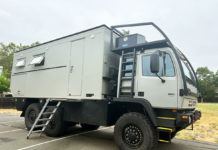By now, most people have heard something in the news about a large zone of ocean trash that’s been identified and labeled as the Eastern Pacific Garbage Patch, located off the California coast. It’s one of several areas identified in the Pacific Ocean where large concentrations of human trash, particularly plastics, are creating detrimental impacts to marine life. Many of you may have noticed public works staff removing trash from some Windsor creeks in September and wondered what was up with all the clipboards and note taking that accompanied the work. Well, it’s not far off to say that the work being done by public works staff is, in part, meant to address the town’s contribution to a global problem – namely, the removal of trash from local creeks, which ultimately gets transported during storm flows to larger rivers like the Russian River and then to the Pacific Ocean.
Trash in our creeks, however, is not just an ocean pollution problem. Locally, trash contributes to water quality problems for both humans and wildlife, threatening drinking water quality, sickening or killing fish and other important aquatic species, and lessening the value of these scenic corridors for recreation and enjoyment within the town. Identifying solutions to a problem of this magnitude may seem overwhelming and yet when broken down to the local level, the identification and elimination of the source of trash seems the most plausible start.
This recent work by staff, called a trash assessment, is just one of the requirements of the town’s newly adopted storm water permit, issued by the North Coast Regional Water Quality Control Board (Regional Board) in January 2016 to address water quality concerns from the town’s municipal storm drain system. The data collected from the trash assessment will be used to evaluate the severity of the trash problem in our creeks. By providing a more detailed picture of sources, types and volume of trash, we can ensure that tax dollars spent to lessen trash in waterways is done cost effectively. For example, before investing in expensive new storm drain infrastructure, like installing trash capture inserts at storm drain inlets, additional information is being collected to determine if sources unrelated to storm drains are greater or lesser contributors of trash, whether due to homeless encampments, from litter deposited along creek-side trails, or from illegal dumping activities. Similar work is being conducted by other partner cities and counties throughout the Russian River watershed, who are listed along with Windsor as storm water co-permittees on the Regional Board permit.
If progress is to be made to reduce water pollution, whether in our local waterways and ultimately our oceans, a greater awareness is needed by all of our citizens and businesses about the importance of putting trash in its proper place. The trash assessment effort will help make the town’s public outreach more effective.
Please remember that litter in the street gutter can ultimately flow to a storm drain, creek, river and ocean. Take the time to pick up any litter you see and dispose of it properly. Talk to your children, neighbors and friends you see littering and offer a reminder of the importance of keeping trash out of creeks. Thanks for doing your part to keep Windsor’s creeks clean.
For more information on the storm water program at the Town, contact Elizabeth Cargay, Town of Windsor Department of Public Works at 838-5385, email ec*****@to***********.com or visit townofwindsor.com/232/Storm-Water-Quality-and-Management.
50.7
F
Healdsburg
April 19, 2025







